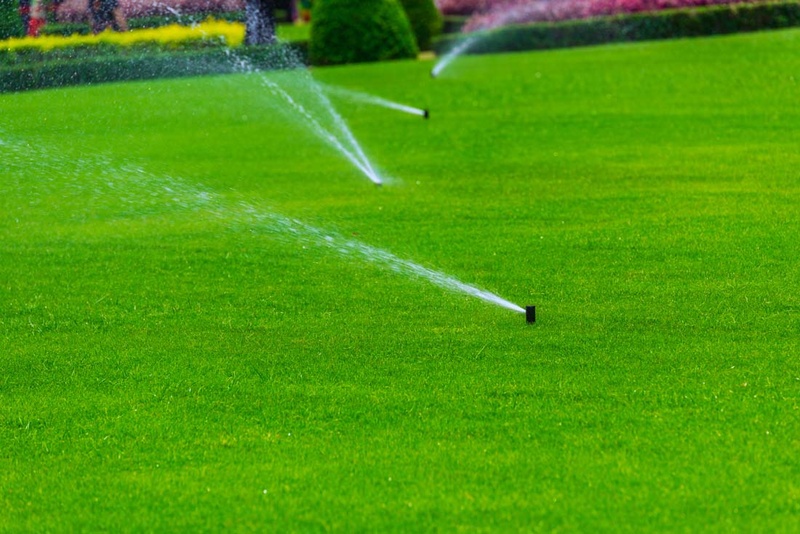
Florida Irrigation: How Much, How Often
Florida homeowners entering the fall season should set their sprinkler systems to deliver three-fourths inches of water two days per week. Set empty cans around the yard, run sprinklers, and then measure the collection to determine if turf is receiving adequate, consistent delivery.
If you live in a community where a commercial landscape company manages lawns and irrigation, you don’t have to give much thought to keeping the grass alive. You can leave it to the pros.
If you’re a homeowner managing your own irrigation, however, you should give more than a thought; you should be informed and water-wise.
In Florida, we’re coming out of the rainy season and heading into the dry time of year when irrigation is important, especially on properties with water-dependent turf-grasses such as St. Augustinegrass.
Some people have turned off their irrigation systems over the summer. Others have left their systems on but manually (or by sensor controls) adjust delivery according to actual rainfall. In either case, the start of the dry season means a need for regular watering.
Correct irrigation practices conserve water and promote optimal lawn health. These practices encompass correct frequency, time of delivery, uniformity of delivery, and quantity of delivery.
How Often Should You Water?
The quick and simple answer is: two days per week.
The more accurate answer is: it depends on the season, location in the state, soil type, presence of shade trees, and grass species.
The University of Florida IFAS Extension has published a table listing how many days St. Augustinegrass (with six-inch roots) can go between waterings. The table is divided by season and region.
For example, during winter, St. Augustinegrass in Pensacola (south Florida) can go 8-28 days between waterings. During the summer, Gainesville (central Florida) can only go 1-5 days between waterings.
UF IFAS advises homeowners to look for the signs that grass needs watering, and only then turn on irrigation. The signs include leaf blades that have folded in half (to conserve water), grass looks bluish-gray, and footprints or tire tracks that stay visible on the grass.
How Much Water Does Your Lawn Need?
The amount of water delivered to your lawn should always be the same, regardless of season. The root zone needs enough water to be wet, and this requires the same amount of water whether it’s winter or summer.
When turf-grass begins to show signs of dryness (folded leaf blades and blue-gray color), three-fourths of an inch of water should be applied. How do you measure this amount? Put several empty shallow cans around the yard at varying distances from the sprinkler heads. Run the sprinklers for 30 minutes. Then look at the cans to see how much water is in each one. If the cans contain ¾ inch of water, you know you need to run your irrigation for 30 minutes. If they contain half an inch, you’ll need to run your sprinklers for 40 minutes; a quarter of an inch, 50 minutes; and so on.
The cans will also show if the sprinklers are delivering uniformly. If one can is less full than the others, the sprinkler head in that zone should be set to run longer than the heads in the other zones.
When Should You Water?
Run sprinklers in the morning between 5 and 10 a.m. Evaporation is less in early morning hours than in the heat of the day.